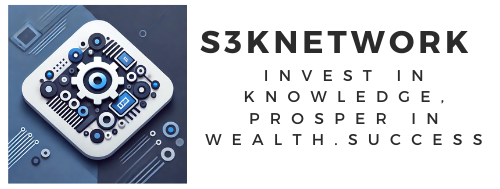Blockchain technology has been one of the most groundbreaking innovations of the 21st century, but its applications stretch far beyond the realm of cryptocurrencies. In fact, the banking and finance industry has been increasingly adopting blockchain solutions, recognizing its potential to streamline processes, enhance security, and reduce costs. You may be familiar with the basic premise of blockchain as a decentralized ledger, but the ways in which it’s transforming financial institutions might still surprise you. In this article, we’ll explore seven blockchain use cases in banking and finance that you probably didn’t know about—until now.
1. Cross-Border Payments: Faster, Cheaper, and More Secure
One of the most significant blockchain use cases in finance is in cross-border payments. Traditional international transfers can take several days to settle, and banks charge significant fees for the service. Blockchain technology changes that by allowing instant, secure, and low-cost transactions across borders.
For instance, Ripple, one of the leading blockchain networks, has developed RippleNet, a decentralized payment system that enables real-time international transfers. By removing the need for intermediaries like correspondent banks, RippleNet allows banks and financial institutions to send payments in seconds with much lower fees.
Why is this a game-changer?
- Reduced costs: Transaction fees are considerably lower than traditional methods.
- Speed: Transactions settle in a matter of seconds or minutes rather than days.
- Transparency: All transactions are recorded on the blockchain, making them immutable and easily traceable.
Example: Santander’s One Pay FX
Santander was one of the first major banks to adopt Ripple’s technology through its One Pay FX app, which enables same-day cross-border payments for its customers. This move has helped reduce the complexity and costs associated with international transfers.
2. Trade Finance: A Transparent and Efficient Solution
The trade finance industry is one of the most complex sectors in banking, involving multiple parties, long processing times, and significant documentation. Blockchain can simplify this by digitizing the process and creating a single, tamper-proof source of truth that all parties can trust.
How does blockchain help?
- Eliminating paperwork: Blockchain platforms digitize the cumbersome paper trail associated with letters of credit, bills of lading, and other trade documents.
- Increased trust: Because all parties have access to a shared, immutable record, it reduces the likelihood of fraud.
- Faster processing times: Transactions that once took days or weeks can be completed within hours.
Example: Marco Polo Network
Marco Polo, a blockchain-powered trade finance network, allows banks to offer faster, more transparent trade services to their corporate clients. Major banks like BNP Paribas and ING have joined the network, using smart contracts to automate the transaction lifecycle.
3. Clearing and Settlement: Reducing Delays and Risk
Clearing and settlement—the processes that finalize a transaction after a trade has been made—are often bogged down by layers of intermediaries, outdated technology, and slow processes. Blockchain technology can significantly speed up these processes while also reducing risk.
Traditionally, after a trade is made, it can take several days to clear and settle the transaction. Blockchain enables real-time clearing and settlement, which reduces the amount of money tied up in pending trades and decreases the risk of counterparty default.
Why is this important?
- Instant settlement: Transactions are confirmed and settled on the blockchain in real-time.
- Lower risk: The faster the settlement, the lower the chance that one party defaults before the trade is finalized.
- Cost-effective: By eliminating intermediaries and paperwork, blockchain reduces the cost of clearing and settlement.
Example: JPMorgan’s Onyx Platform
JPMorgan developed its Onyx blockchain platform to facilitate faster and more secure settlements of financial transactions. By tokenizing traditional assets, the platform is able to reduce the settlement time from days to mere minutes.
4. Know Your Customer (KYC) and Anti-Money Laundering (AML): Improving Compliance
Compliance with KYC and AML regulations is essential for banks to avoid heavy penalties and prevent illicit activities like money laundering and terrorist financing. However, these processes are often manual, labor-intensive, and prone to error. Blockchain offers a way to streamline these tasks by creating a decentralized and secure identity verification system.
Benefits of blockchain for KYC/AML:
- Efficient verification: Blockchain allows for a single, immutable record of customer data that can be accessed by multiple institutions, reducing redundancy.
- Lower costs: Automating the KYC process using smart contracts significantly reduces the cost of compliance.
- Better security: Blockchain’s encryption ensures that customer data is securely stored, reducing the risk of identity theft.
Example: KYC-Chain
KYC-Chain is a blockchain-based solution that allows banks to perform KYC and AML checks in a more efficient and secure manner. By sharing verified customer data across multiple institutions, it reduces the need for repetitive checks, saving both time and money.
5. Smart Contracts: Automating Complex Financial Agreements
Smart contracts are self-executing contracts with the terms of the agreement directly written into code. In the context of banking and finance, they can be used to automate various types of agreements, from simple loans to complex derivatives.
By eliminating the need for intermediaries (such as lawyers or brokers) to enforce the contract, smart contracts reduce costs and minimize the chances of human error or fraud.
Key benefits of smart contracts:
- Automation: Once the conditions are met, the contract executes automatically, reducing delays.
- Transparency: All parties have access to the same information, reducing disputes.
- Cost savings: By cutting out intermediaries, smart contracts reduce transaction costs.
Example: Credit Suisse and Smart Contracts
Credit Suisse has explored using smart contracts for over-the-counter (OTC) derivatives trading. By automating the settlement process, they’ve been able to reduce the time it takes to complete trades while minimizing the risk of errors.
6. Lending and Syndicated Loans: Streamlining the Loan Process
The loan market, especially syndicated loans (where multiple lenders finance a single borrower), can be inefficient due to the involvement of multiple parties, manual processes, and lack of transparency. Blockchain provides a way to simplify and expedite the lending process.
Blockchain’s decentralized ledger can track all parts of a loan’s lifecycle in real time, reducing the need for intermediaries and manual record-keeping. For syndicated loans, this means faster approvals, better coordination among lenders, and reduced operational risks.
Blockchain benefits for lending:
- Real-time tracking: Blockchain allows for the real-time monitoring of loan terms and payments, making the process more transparent.
- Increased efficiency: Smart contracts can automate loan disbursements and repayments, reducing delays.
- Risk reduction: Blockchain’s transparency reduces the risk of disputes among lenders.
Example: BBVA’s Blockchain-Based Syndicated Loan
BBVA was one of the first banks to complete a blockchain-based syndicated loan. By using blockchain technology, they were able to reduce the time required to process the loan, improve transparency, and cut down on administrative costs.
7. Tokenization of Assets: Creating New Investment Opportunities
Tokenization refers to converting physical or traditional assets, such as real estate, stocks, or commodities, into digital tokens on a blockchain. These tokens represent ownership in the asset and can be easily traded on digital platforms.
This use case has the potential to democratize investment by allowing fractional ownership of high-value assets, making them accessible to a wider range of investors. Additionally, tokenized assets can be traded 24/7, unlike traditional markets which have specific trading hours.
Key benefits of tokenization:
- Accessibility: Investors can purchase fractional shares of high-value assets, such as real estate, that would otherwise be out of reach.
- Liquidity: Tokenized assets can be traded more easily and quickly than traditional assets.
- Transparency: The ownership and transfer of tokens are recorded on a blockchain, providing a clear chain of custody.
Example: Securitize
Securitize is a platform that facilitates the tokenization of assets, enabling investors to trade tokenized securities on a blockchain. This creates new opportunities for liquidity and opens up the market to a wider range of investors.
Also Read: Trustee Responsibilities: What You Need to Know
Final Thoughts
Blockchain technology is transforming the banking and finance industry in ways that many people may not yet realize. From cross-border payments to smart contracts and asset tokenization, blockchain is enabling faster, cheaper, and more secure processes. Financial institutions that embrace this technology are likely to stay ahead of the curve by offering better services to their customers while reducing operational costs. As the technology continues to mature, we can expect even more innovative applications to emerge, further revolutionizing the financial landscape.
By understanding these blockchain use cases, you’ll be better positioned to appreciate the future of banking and finance and how this technology might shape the world of money as we know it.

